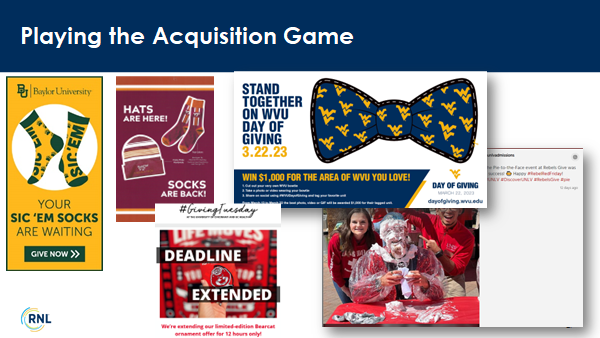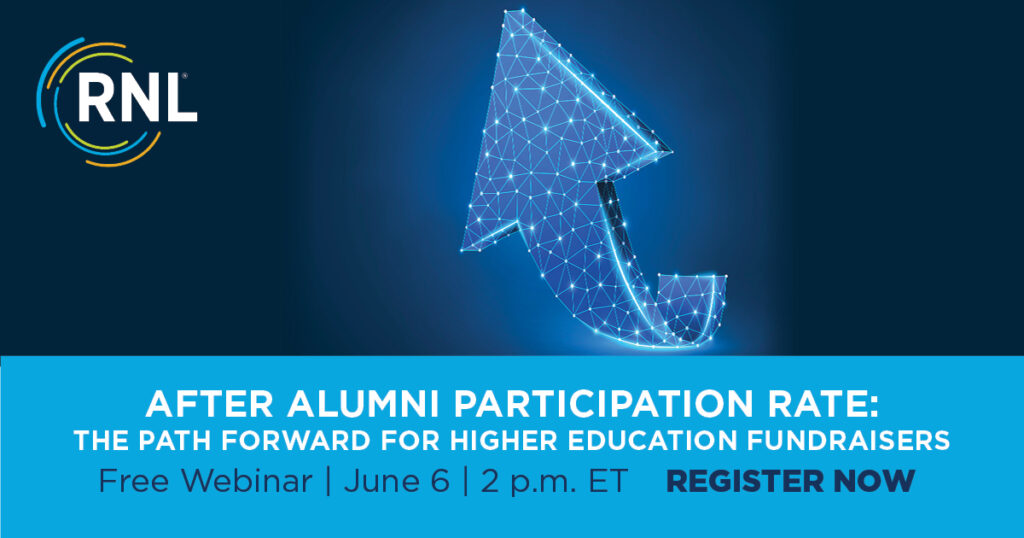fundraising
Post-Alumni Participation Rate Game: 3 Actions for Higher Education Annual Giving
The bombshell announcement last week by US News and World Report that annual alumni participation rate in giving (APR) would no longer be part of their annual college rankings starting in 2024 set annual giving offices abuzz and my phone on fire. We are suddenly free from a game we’ve had to play to appease the rankings gods (and important campus stakeholders), often leading to some problematic fundraiser behavior. There were plusses and minuses to the APR game, but it’s all over.
We have a unique opportunity to make some crucial shifts in the coming months now that the APR game isn’t looming over us. Here are three things I think every annual giving shop should do right away.
1) In higher education annual giving, continue broad-based engagement, but ramp up your pipeline game
There are a whole lot of small-dollar gift programs that have been created in higher education to pump up donor counts in the APR game. I’m actually a big fan of them, because they function to introduce giving and establish the institution as a charity, and donors have to start somewhere. These include everything from sock campaigns to holiday ornaments to gifts tacked on to events. These campaigns build donor rolls, but if you’re not careful, don’t really build an informed culture of philanthropy.
That’s because many of them are conducted with no attention to thanking transactional donors, sharing the impact of giving, or a coordinated campaign to move donors into other giving streams and a pipeline for greater investment. Since the goal is no longer just pumping up the APR donor count, I would argue that these campaigns should continue, but significant investment should be made with each campaign to craft a post-gift donor cultivation and education strategy.

Image: Broad-based appeals in higher education alumni fundraising should continue in a world where APR matters less for rankings, followed by education about impact.
Send out those socks. But, also, send a three-part personalized video series to each donor, in the voice of a student scholarship recipient, a faculty member and a fellow donor. Follow up with an impact email showing the combined value and impact from the small gifts of all “sock” donors. You don’t have to just move on to the next gimmick to constantly chase donor count any more. Educate these donors and bring them into greater, more “sticky” giving.
Don’t drop your giving day, challenges, or popular item-based giving programs. Double down on social giving (volunteers, viral campaigns with influencers). These are very popular with new and younger donors, can have great impact with intermittent donors, and will keep your giving program fresh. Just combine investment in these programs with strong investment in long-term engagement.
This is a key tactic in the shift from donor count to “pipeline,” and you’re about to hear that word a lot more in the coming years. It might just be the phoenix that is born from the ashes of the APR burnout. A pipeline focus means talking about giving stats in new ways.
2) Let’s advance meaningful engagement metrics in higher education annual giving
After some immediate tactical shifts, our next opportunity is to start talking about the metrics that will really matter in the future. I’ll expand on those in the coming weeks. The RNL team has been talking about our ideas, and the CASE Alumni Engagement Metrics offer a start.
A key focus should be pipeline to leadership and major giving. Inclusivity and reach within your alumni base is also important. I’d also like for us to start to tackle some heady topics like purpose and meaning for our alumni contributors.
Start paying more attention to things like the path to the leadership and major gifts. Or the distribution within your donor pool by generation. And, how your giving base is inclusive of who your alumni really are, and to what populations aren’t engaged today.
We’re jumping into that discussion on June 6 in a webinar, and we’d love to have you join the discussion or check out the recording.
Learn more about the path forward for higher education fundraisers
I’ll go even deeper into the topic of moving forward without alumni participation rate and the path forward with some friends in our webinar, After Alumni Participation Rate: The Path Forward For Higher Education Fundraisers.
Join this discussion of how we move forward as advancement leaders together to define the next generation of alumni donor engagement. Register now and join us.
We are also ready to help you identify and implement the strategies that will lead to sustainable fundraising. Reach out and we will set up a complimentary consultation.
3) Stop “losing” alumni and deliver on the promise of lifetime engagement
Finally, a sad side effect of the APR game was that there was a very strong incentive for institutions to “creatively lose” alumni to artificially depress the APR denominator. Basically, when a non-giving alumnus came up with a bad address, or sort of opted out of communications, they just got deleted, with no attempt to find them, confirm communication preferences or reconnect. In some cases (often in violation of both the spirit and letter of the metric guidelines) whole segments of databases were deleted to keep the denominator lower. I’m not joking.
If you think or know this was done at your institution, begin an investigation project and try as hard as you can to bring these alumni back and reconnect. As long as you do this with attention to confirmed legal contact restrictions, you have no fear, because bringing low-yield prospects back into your pool now has no risk (because there is no more rankings denominator). I predict you’ll find many alumni ready to reconnect. Data research, low cost digital outreach, peer volunteers and other re-connection methods are great options.
Deliberately “losing” alumni to boost rankings was horrible fundraiser behavior. Remember, as advancement leaders, we’re here to offer a fulfilling lifetime connection. Engage in creative finding. Your next board member, student recommender, and major/planned giver could be right there waiting.
Without alumni participation rate in charge, it’s our time to control the giving conversation as donor-focused leaders
This is our moment. We no longer have a meaningless, external bean counter standing over us, forcing us to bad behavior that hurts donors and is misaligned with our real goals. It’s time to put down the Excel spreadsheets and do the work of meaningful engagement with alumni donors, higher education fundraisers. Let’s get to it.
What’s your best path to sustainable fundraising?
Let’s talk about how we can help you build a robust donor pipeline, engage the right donors at the right time, and chart a course to fundraising success year after year.

